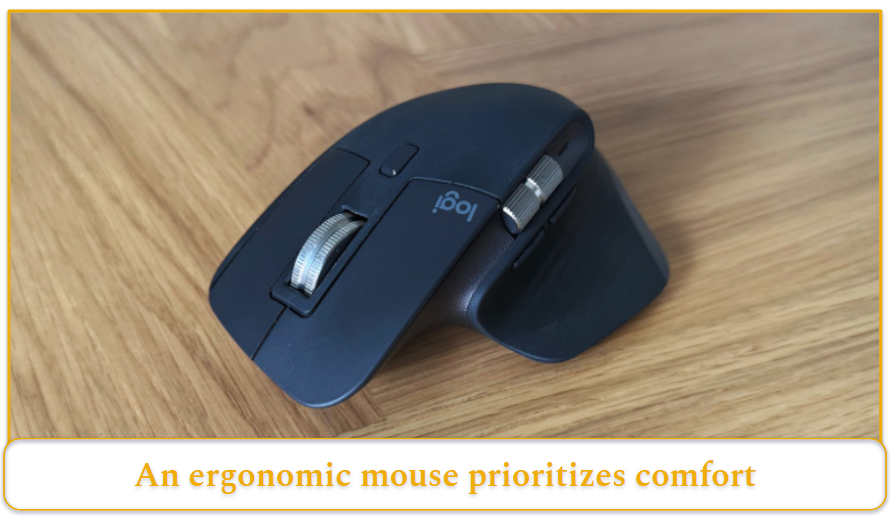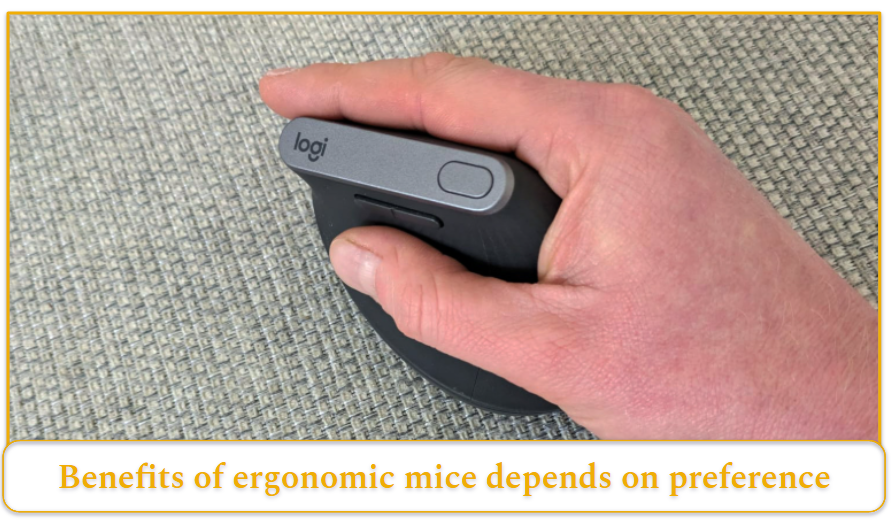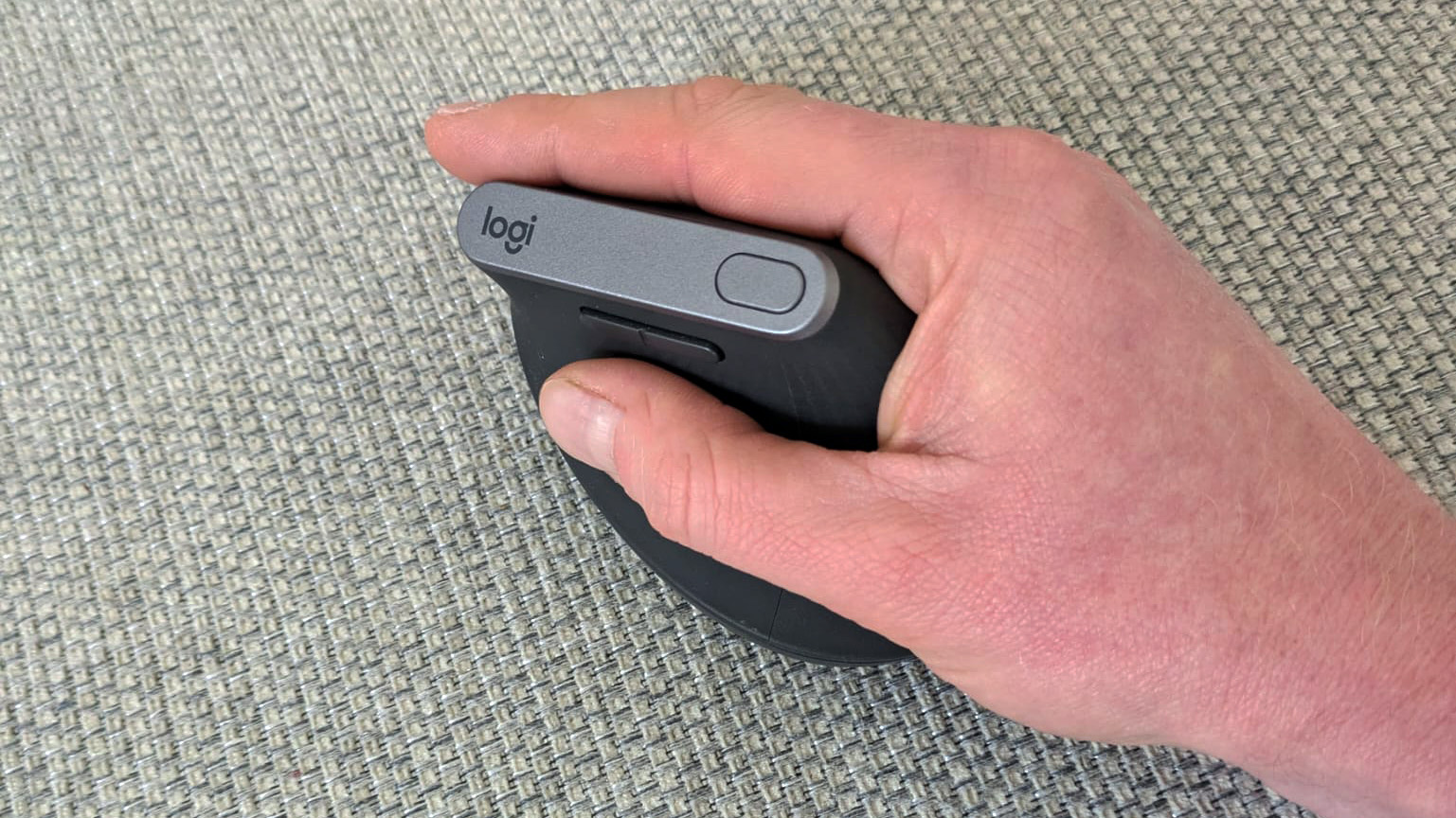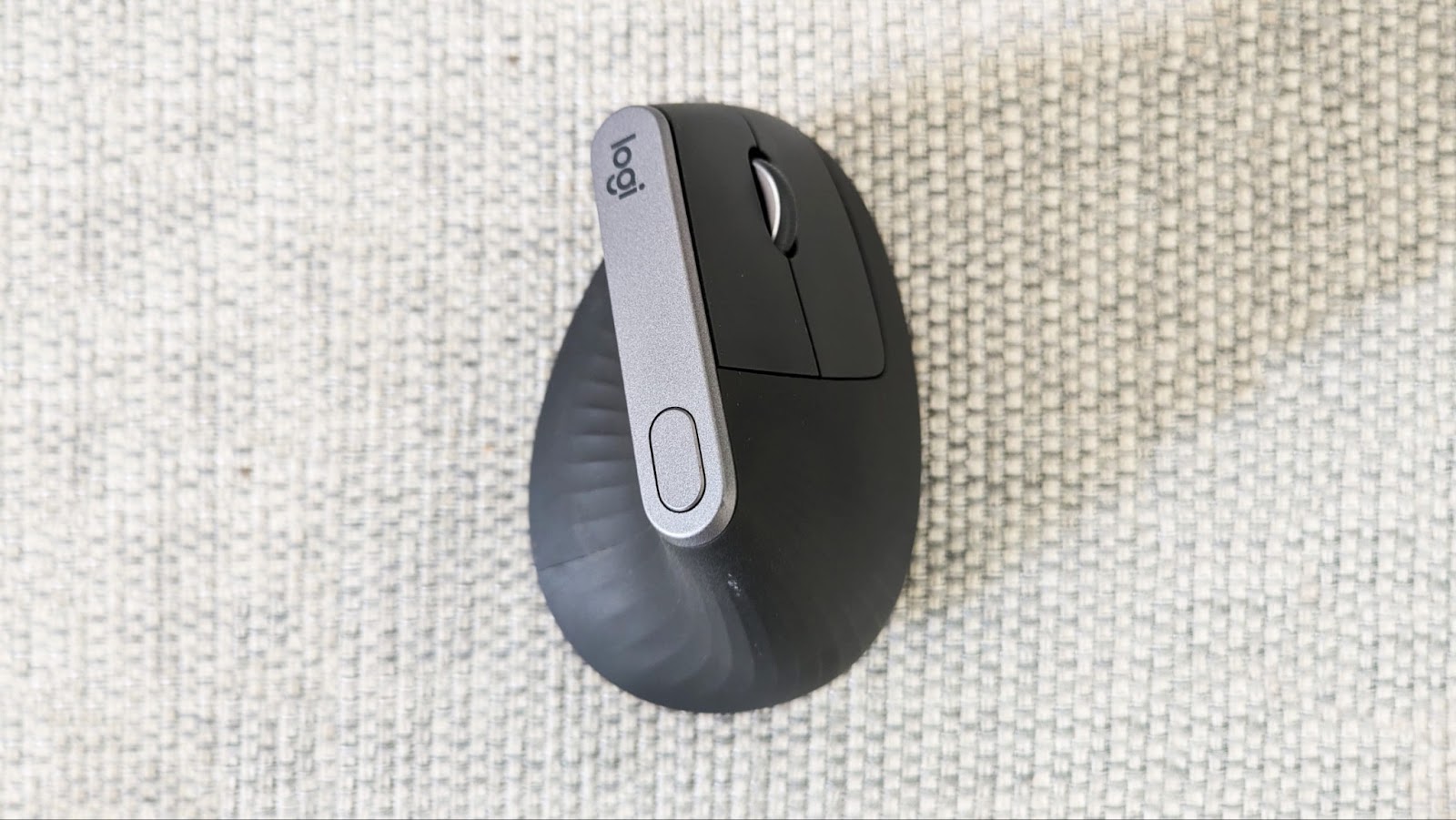While standard and gaming mice already come in all shapes and sizes, there’s a third category too that pushes things to new extremes. Some of the most unusual looking of the bunch are ergonomic mice and they’re a case of function over form.
Are ergonomic mice worth it though? What are they for and do they actually work? Let’s see what makes them tick.
What are Ergonomic Mice?

Ergonomic mice prioritize physical support and comfort over performance, portability, or cost. Unlike gaming mice, which focus on speed and precision, or traditional mice, which often emphasize affordability or compactness, ergonomic models are designed to reduce strain on your body.
Using a standard mouse places your hand, wrist, and arm in a relatively unnatural position. While this might not cause immediate discomfort, long-term use has been linked to issues like repetitive strain injuries, tendonitis, and carpal tunnel syndrome. Ergonomic mice aim to prevent these problems by promoting a more natural hand and arm position.
Although all ergonomic mice share the goal of minimizing long-term physical impact, they come in various designs tailored to different needs and usage scenarios.
Types of Ergonomic Mice
- Vertical Ergonomic Mice: This is the most common kind of ergonomic mouse and what most people will picture, they tend to stick closely to a traditional mouse shape but tilt it. While they’re called vertical mice, most are angled to around 60 degrees, though there are fully vertical options that almost resemble a thick joystick.
- Trackball: Perhaps the most unique style of ergonomic mouse, trackball mice don’t operate via moving the mouse itself. Instead, they feature a large, freely-spinning trackball that controls the mouse cursor via finger movement instead of fully moving your hand. It can take some getting used to but limits hand and arm movements and can offer more precise control too.
- Slightly Ergonomic: Choosing an ergonomic option doesn’t mean needing to go the whole way however, there are a range of options that find a middle ground. Often office and productivity focused, these mice don’t employ any particularly extreme aspects but instead focus on a sculpted shape to reduce strain where possible.
Do Ergonomic Mice Actually Work?

This is a tough question to answer definitively, as the effectiveness of ergonomic mice depends on individual preferences, usage patterns, and workstation setups. That said, the most accurate generalization is that while it’s still debated whether ergonomic mice provide major improvements, they certainly don’t make things worse.
Several studies have looked into the benefits of ergonomic mice—especially vertical models compared to traditional flat ones. Most of the research suggests that vertical mice help maintain a more natural position for the hand and forearm. They also tend to reduce the muscular activity needed for operation, which is generally seen as a positive. Some studies support this at a basic level but conclude that these benefits don’t necessarily reduce the risk of conditions like carpal tunnel syndrome.
As with ergonomic chairs versus racing-style gaming chairs, the benefits of an ergonomic mouse often come down to personal preference, use case, and how long you’re using it. Personally, after testing and reviewing many different mice, I prefer a standard flat mouse with some ergonomic shaping. Since I rarely use a mouse for more than one or two hours at a time, fatigue isn’t a big issue, and I find conventional mice offer a better balance of comfort and useful features like programmable buttons.
That said, I’ve also spent time using 60-degree tilted ergonomic mice. Once you get past the initial adjustment period, they can be more comfortable for longer sessions. A good friend of mine, a programmer who uses a mouse extensively throughout the day, has found noticeable relief in his hand and forearm after switching to a vertical mouse.

Ergonomic Mice Pros & Cons
Pros
- Improved Hand Position: Ergonomic mice are designed to support a more natural hand and forearm posture, which can reduce strain during extended use.
- Productivity-Oriented: These mice are often tailored for office work and programming. Many include useful features like programmable buttons and multi-device support.
- Lower Muscle Activity: Some studies suggest ergonomic mice reduce the muscular effort required to operate them, which may help with overall comfort.
- Evolving for Gamers: While traditionally built for productivity, newer ergonomic mice designed for gaming now offer polling rates as low as 1ms, matching the responsiveness of standard gaming mice.
- Affordable Options Exist: Although some models are expensive, basic vertical mice can be found for under $30.
Cons
- Higher Average Cost: Ergonomic models tend to be slightly more expensive than standard mice, similar to the pricing trend with ergonomic chairs and desks.
- Portability: Due to their larger size and shaped design, ergonomic mice are generally less portable and harder to fit in a compact laptop bag.
- Gaming Performance: Most ergonomic mice still fall short in areas like sensor accuracy and advanced features, making them less ideal for competitive gaming.
- Learning Curve: Switching to an ergonomic design, especially a vertical mouse, often requires an adjustment period. You may experience reduced performance initially, particularly in fast-paced tasks or games.
- Feature Trade-Offs: The focus on ergonomics can sometimes mean sacrificing other features, such as customizable weights, RGB lighting, or high-end sensors found in specialized mice.
Are Ergonomic Mice Worth it?
Whether an ergonomic mouse is right for you depends on your priorities and how you use your mouse day to day.
If you regularly use a mouse for long periods, the reduced fatigue and potential long-term comfort benefits of an ergonomic design could be worthwhile. You might also find the hand position of a vertical mouse or the control style of a trackball more comfortable once you get used to it.
However, these benefits can come with trade-offs. Ergonomic mice often lack certain quality-of-life features—like extra side buttons or high-performance sensors—that are common in gaming or productivity-focused flat mice. If those features are important to you, a compromise might be an ergonomically-shaped flat mouse that balances comfort with functionality.



